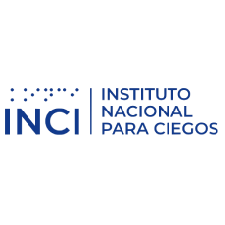Selection system. All the articles presented to the journal shall be submitted to a “double blind” selection process that will be carried out with the help of expert peer reviewers on each subject. The participation of reviewers will be made ad honorem, and we expect it to be assumed as an act of scholarly reciprocity seeking to collaborate in a constructive manner to strengthen (and validate) the research and contributions of other colleagues within the field. In the case of reviews, which are diffusion documents, they may be checked by the editor himself or by other members of the editorial team of the journal. Their publication will be decided based on their thematic and textual coherence, their relevance for the field, or according to the relevance of the proposed discussion.
Exclusiveness. The articles submitted to the Revista Nacional de Odontología cannot be in a selection process in other journals, nor should they be presented at other publications while they are under evaluation.
Confidentiality. Since the selection is made through a “double blind” system, seeking to warranty the independence of the parts (neither the author nor the reviewers will have access to each other’s identity, profile or origin), this information shall be treated solely by the people in charge of the journal and will not be revealed to third parties. The support of the process for each article will be kept for indexation purposes or for review verification.
Profile of the evaluators. The peers of the Revista Nacional de Odontología will have at least a master’s level and published production in the area on which they will be asked to review texts.
Evaluators. Journal evaluators are expected to do a detailed and constructive reading of each article they accept to review, seeking to not only give a recommendation of approval or rejection to the editor, but also enable authors, through their comments, to improve their texts and reflect on the scope, possibilities or shortcomings of their writings. Additionally, evaluators must consider that the texts entrusted to them by the editor are unpublished, and any improper or unauthorized use of the information contained therein would imply a serious unethical conduct. Moreover, the responsibility of evaluating a work, once accepted, cannot be transferred to third parties, especially if this has not been justified or previously consulted with the editor. Finally, any conflict of interest identified by the evaluator after receiving a work that may undermine their independence in the preparation of an opinion must be informed.
Reception and editorial evaluation. Once the editor receives the submission of the article a notification will be sent to the author confirming the submission. Afterwards, the editor will carry out a preliminary review of the article to see if it complies with the presentation parameters for the journal and if it corresponds to the editorial and thematic guidelines. The editor holds the power to decide whether the article can be evaluated for selection or if it should be rejected on this first step. In this phase the editor may also return the text to the authors, requesting some corrections or clarifications before it can be sent to the official selection process. In such case, the authors must resubmit the article with the demanded corrections (or the documentation that may be missing such as the author card or commitment letter) if they wish to continue the process.
Peer selection. If the article is admitted for the selection process the editor will set to assign reviewers, locating and convoking two expert researchers on the area of the article. The reviewers will then receive the full text of the article and a format that will guide them through the process.
Selection time. The usual length of a complete selection cycle (location of peer reviewers, invitation and acceptance, reception of the judgments, delivery to the authors) must not exceed a trimester. However, it is relatively difficult to find adequate and willing peers on some topics so the timeframes will be negotiated directly with each reviewer considering their availability (and seeking to carry out the process in the most efficient way possible).
Results. The editor will send a result to the authors based on the judgment of at least two peer reviewers. In case the judgments of both reviewers are in conflict (an acceptance and a rejection) we will call a third reviewer before the editor can inform the authors of the results. The results of the selection process can be: “approved without modifications”, “approved with minor modifications”, “approved with mayor modifications” or “rejected”. The “approved with substantial modifications” is equivalent to “revise and resubmit”, which implies that the authors must be willing to restate their proposal. Should the authors not be willing to carry out the modifications the selection process will be over and the authors will be free to submit their work to another publication.
Corrections. Along with the results, should the editor consider that it is necessary to have a corrected version of the article, he will accord a deadline with the authors for the submission of such a version. This deadline oscillates between 2 and 10 weeks, the last in case a substantial adjustment is needed. If the authors fail to comply with the stipulated deadlines the editor may end the process for the article, thus preventing it from being published. To help with the review of the corrected version authors must use the word change-tracking feature and send a letter to the reviewers explaining the adjustments that were carried out. Without this response the editor will not send the adjusted article for verification.
Verification and final version. The verification will be carried out with the help of the peer reviewers in most cases but the editor can also check the adjustments in case they were minor corrections. Thus, should slight corrections be requested for an article we ask the authors to refrain from incorporating mayor changes or changes that imply conceptual or methodological adjustments that have not been asked by the reviewers. Should the adjustments be satisfactory, the editor will inform the authors of the approval and will request the presentation of the final version of the article in a template that shall be sent to editorial production. Should a significant error, requiring substantial changes, be found in preparing the final version, the editor must be informed.








